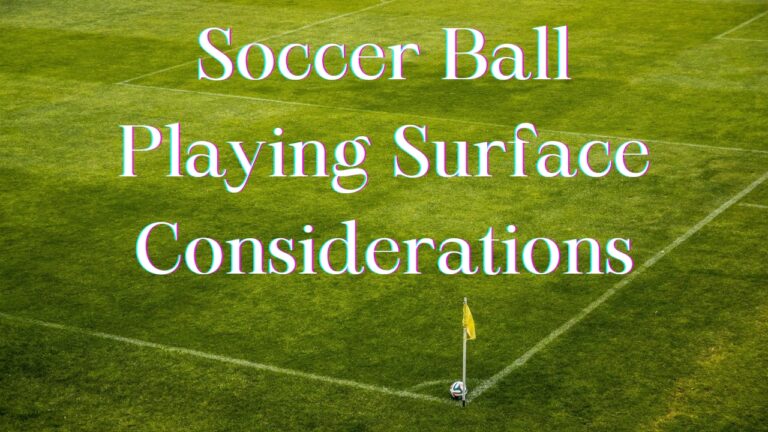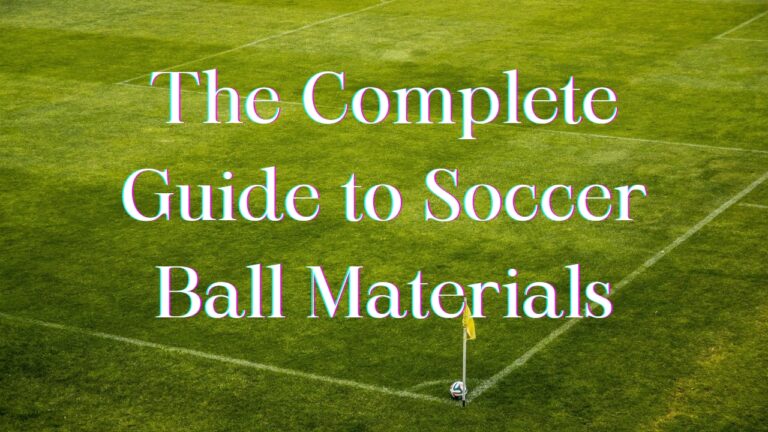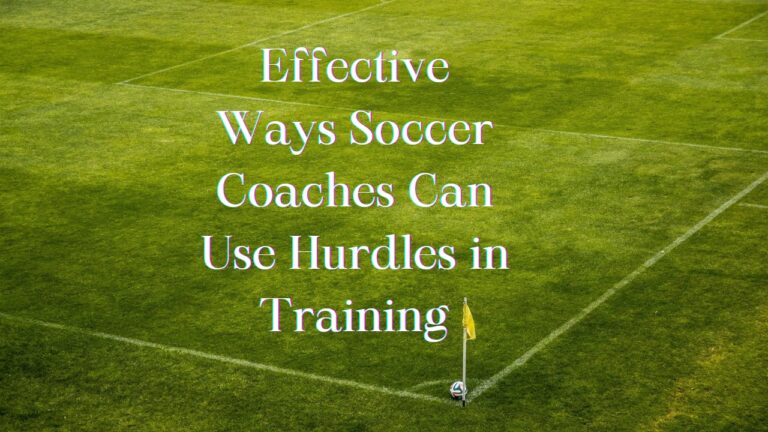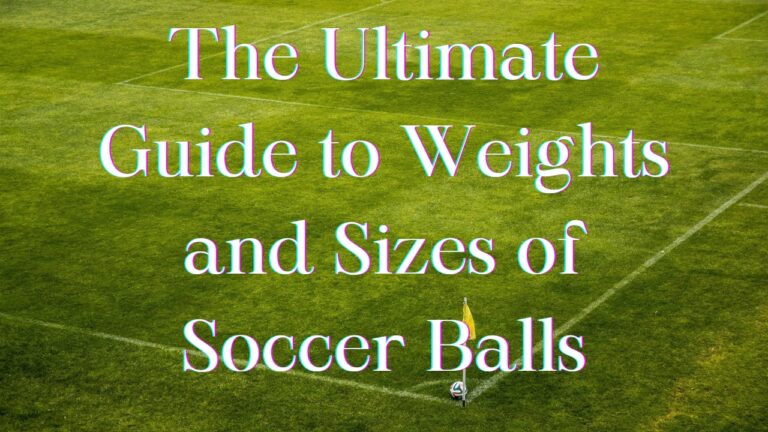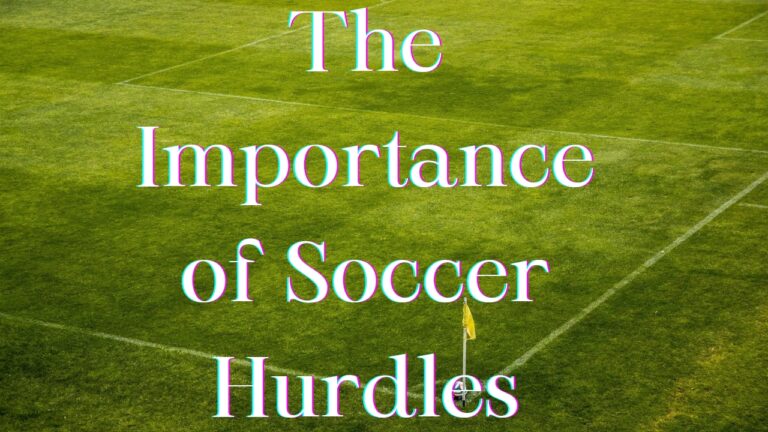Choosing the Right Soccer Ball Material
Leather Balls
Pros:
- Very durable if cared for properly
- Natural feel when kicking
- Classic look
Cons:
- Expensive compared to synthetic balls
- Require more maintenance
- Absorb water and get heavier in wet weather
Synthetic Leather Balls
Pros:
- More affordable option
- Lighter weight than leather
- Maintain shape well over time
- Withstand more wear and tear
Cons:
- Less natural feel when kicking
- Can get slippery when wet
- Not as durable long-term as good leather
Rubber Balls
Pros:
- Inexpensive cost
- Hold up well in tough weather
- Easy to clean mud/dirt off
Cons:
- Too bouncy/light for controlled play
- Odd bounce unpredictability
- Not permitted in most official matches
How Weather Impacts Materials:
- Leather gets heavier in rain but regains shape after drying
- Synthetic can get slick in wet weather and retain water
- Rubber withstands rain but loses bounce in cold temps
Inflating Your Soccer Balls Properly
Recommended PSI Levels
- Official match balls: 8.5-15.6 PSI
- Outdoor practice balls: 8-12 PSI
- Indoor balls: Low end of official match range
Using a Pressure Gauge
- More accurate than manual inflation
- Digital gauges are easier to read than analog options
- Attach needle into ball valve to get reading
- Calibrate the gauge regularly for consistency
Risks of Under-Inflation
- Poor bounce predictability
- Won’t travel as far when kicked
- Ball shape/roundness deforms
- Increased chances of leakage
Risks of Over-Inflation
- Too hard, injuring foot/head when struck
- Decreased ball control
- Shortened lifespan from fabric stretching
- Higher frequency of valve breaking
Tips:
- Test bounce height as a consistency check
- Adjust PSI if the playing surface changes
- Re-check pressure before each match
Cleaning Your Soccer Balls
Materials Needed
- Mild or gentle soap (dish soap, hand soap, laundry detergent)
- Soft-bristled scrub brush
- Microfiber towel
- A small bowl of warm water
- Optional: old toothbrush for crevices
Cleaning Technique
- Rinse the ball first with lukewarm water using a sponge or cloth to dislodge any mud or debris. Never start scrubbing a dry ball.
- Apply a small amount of soap foam to the ball exterior using the scrub brush
- Use gentle circular scrubbing motions around the entire ball surface
- Pay attention to indented panel crevices and valve openings with occasional toothbrush scrub
- Rinse and lather off the ball when finished cleaning
- Pat dry with a microfiber towel; allow to fully air dry
Cleaning Schedule
- Before/after each game or practice session
- When dirty – don’t let mud cake on the ball
- 1x/month deep clean for casual practice balls
- Biweekly or monthly for frequent match balls
Tips:
- Never submerge the ball fully in water
- Check the label for ball-specific cleaning guidance
- Avoid using abrasive brushes or scouring pads
Storing Soccer Balls
Storing to Prevent Damage
- Keep inflated to prevent shape deforming
- Store in a cool, dry location away from heat
- Lay flat or lightly stack to avoid denting
- Avoid placing heavy objects on balls
Use Breathable Bags/Containers
- Mesh ball bags allow airflow so balls don’t get musty
- Natural fabric like cotton is best for minimizing condensation
- Several balls can be stored together in a larger mesh sack
- Plastic containers should have ventilation holes
Keep Away From Direct Sunlight
- UV rays and excessive heat can damage ball covers
- Fade ball exterior and panel markings
- Weaken glue and stitching that holds panels together
- Store in closet, cabinet, or ball bag instead of windowsill
Other Storage Tips
- Ensure storage area is clean and pet/pest free
- Occasionally air out stored balls
- Store leather balls with soft inflation
- Clean balls before long-term storage
When to Replace Your Soccer Balls
Signs of Wear
- Fading color/graphics
- Panels peeling at edges
- Fabric feeling stretched tight
- The wonky shape that won’t inflate round
- Valve hole loosening/widening
Replacing Game Balls
- Replace primary season game balls yearly
- High school and pro multiple balls used per game
- Youth leagues may use one ball all season
- Ensure game balls meet sports governing specs
Replacing Practice Balls
- Durability depends on ball quality
- Budget practice balls last 1 season
- Intermediate balls usable for 1+ years
- Premium balls can take 2+ years of practice
Factors That Shorten Lifespan
- Player age and kick intensity
- Playing surface abrasion
- Improper inflation/storage
- Not cleaning mud/dirt off
Getting the Most Value
- Rotate multiple balls in/out of play
- Designate old balls as “backup” only
Additional Soccer Ball Care Tips
Avoid Excessive Heat Exposure
- Ideal to store balls around 70°F if possible
- Don’t leave in a hot car or direct sunlight
- Bring to ambient temperature before play
- Alternate balls if playing on hot artificial turf
Check Inflation Frequently
- Inflate before every match/practice session
- Use a pressure gauge each time for accuracy
- Log the PSI number on the ball in permanent marker
- Compare current pressure to the recommended
Wash Hands Before Handling
- Prevent dirt, oils, and grime transfer
- Use soap and water or hand sanitizer
- Clean hands minimize the need for ball washing
Never Use Harsh Cleaning Chemicals
- No bleach, ammonia, or alcohol-based cleaners
- Avoid petroleum-based solvents
- Read the ball label for safe cleaning guidance
- Stick to gentle soap/detergent and water
Additional Care Tips:
- Let new balls decompress 48+ hours before play
- Occasionally moisturize leather balls with conditioner
- Spot scrub dirty areas instead of full ball wash
Finding the Best Soccer Balls
Top Ball Brands
- Nike makes a variety of top-match balls
- Adidas praises FIFA and its durability
- Select makes affordable training balls
- Puma, Mitre, Molten, and Umbro also recommended
Key Features By Skill Level
For Beginners:
- Reliable consistency in size, shape, weight
- Durability to withstand kicks and drops
- Simple single-color pattern
For Intermediate Players:
- More response and controlled ball flight
- Foam or cushion backing for a better feel
- Bright colors and graphic prints
For Advanced Players:
- Premium leather or microfiber covers
- Technically-advanced panel shapes and cording
- FIFA and league tournament approvals
Getting the Right Size By Age
- Size 3 for ages 5-8 (very light)
- Size 4 for ages 8-12
- Size 5 for ages 13+ (full adult weight)
Additional size guidance:
- Smaller sizes for younger leagues
- Match sizes for teen+ competition
- Official size/weight per local association rules
Conclusion
Taking proper care of your soccer balls is essential for safety, optimal performance, and maximizing their lifespan. By choosing the right ball material for your climate and skill level, inflating them appropriately before each use, cleaning them regularly, and storing them properly when not in play, you’ll keep your balls in top shape.
Replace your game balls annually, or when you notice significant wearing. For ideal ball control and a fun playing experience, find high-quality balls with features aligned with your skill level and soccer league guidelines. With the right soccer ball maintenance, your equipment will be ready to help sharpen and improve your skills season after season.
Related Post: The Complete Guide to Soccer Ball Sizes and Weights
The Top 5 Playing Surface Considerations for Soccer Balls
Author


